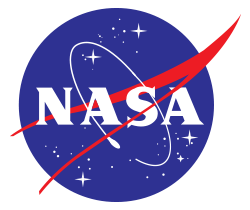
NASA
contractor United Space Alliance recently migrated to Linux from
Windows and went to The Linux Foundation for help with training.
Expert training produces seamless Linux migration
With a goal of getting his team up to speed on developing applications in Linux, Chuvala was looking for solid training that would address various skill levels. The Linux Foundation’s training staff arranged two courses geared specifically for the USA/NASA team’s needs: Introduction to Linux for Developers and Developing Applications For Linux. Both training sessions were adapted to provide tailored instruction for the diverse group.Dominic Duval, the Director of Enterprise Training, was able to leverage the group’s mixed backgrounds, augment their existing knowledge with Linux-specific skills, and prepare them for developing apps related specifically to the needs of the ISS. Chuvala was extremely pleased with the expertise and flexibility Duval provided the team. “Initially, I was worried about some of our real techie guys getting ‘bored,’” said Chuvala. “But that was not the case at all. Likewise, the new people were sufficiently challenged.”
Flexible, distribution-flexible training delivers excellent value
When searching for a Linux training resource, Chuvala performed a trade study and identified a primary goal of securing a training partner who could speak with authority, provide a strong curriculum, and offer flexibility in how to deliver the class. “Linux Foundation had it all, and provided the trainer on-site at our headquarters, which was a huge plus,” remarks Cuvala. “On top of that, the cost was very good, so it was overall a great value.”Duval also espouses the benefits of Linux Training’s value proposition. “USA/NASA is as heterogeneous as it gets. They had a heavy Debian Linux deployment but also various versions of RHEL/CentOS. Because our training is flexible to a variety of distributions, we’re able to address all those different environments in a single training session. No other training organization can provide that.”
Mastering Linux to support laptops and the world’s first “Robonaut”
The dozens of laptops under Chuvala‘s care have extensive development needs—for a very small number of users. “At the ISS, our constellation of users maxes out at six, all with very specific requirements and duties.” To manage all of the astronaut’s needs Chuvala was looking for newer, more robust enterprise support, which was achieved by moving from a Scientific Linux distribution to Debian 6.Along with the ongoing laptop support, a new challenge for Chuvala’s team is headed to the ISS – Robonaut (R2). Designed to take over some of the astronaut’s responsibilities, R2 will be the first humanoid robot in space. Running on Linux, the robot can be manipulated by onboard astronauts with ground controllers commanding it into position and performing operations. The Linux training from the Linux Foundation will help NASA developers ensure that R2 can be a productive addition to the ISS. Still in the fine-tuning phase, R2 will eventually carry out tasks too dangerous or mundane for astronauts in microgravity.
Not surprisingly, coming from someone whose customers are in outer space, Chuvala believes that one of the greatest lessons learned during training came when Duval presented Linux from a global perspective. “Things really clicked after we came to understand how Linux views the world, the interconnectedness of how one thing affects another. You need that worldview. I have quite a bit of Linux experience, but to see others who were really getting it, that was exciting.”
Fuente: Linux Fundation








